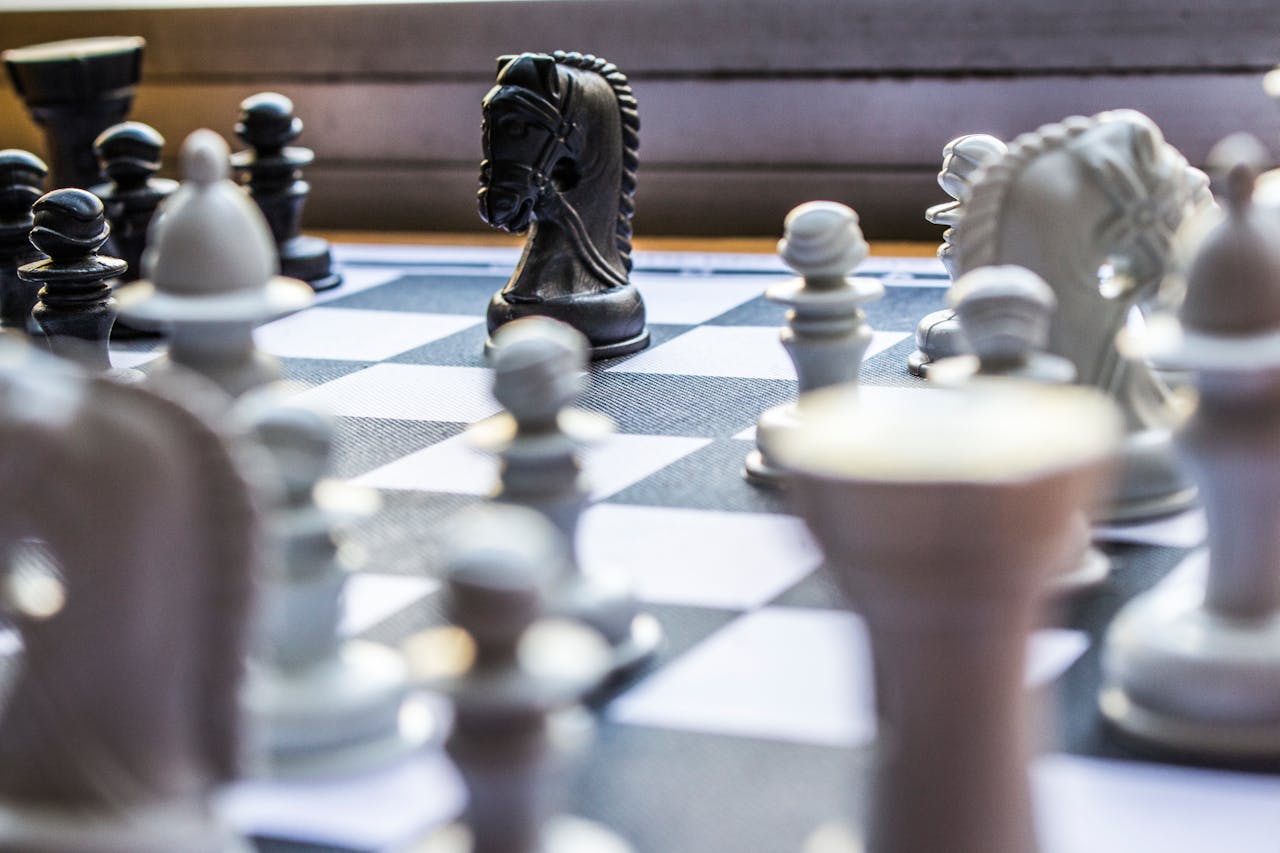Enhancing decision-making skills is crucial in both personal and professional life. Critical thinking plays a vital role in this process by allowing individuals to evaluate information and make informed choices.


Critical thinking involves analyzing data, questioning assumptions, and considering multiple perspectives. This method helps in drawing logical conclusions and avoiding common pitfalls, leading to better outcomes overall.
1) Identify Cognitive Biases


Cognitive biases are mental shortcuts that can affect decision-making. These biases can be unconscious and influence how information is processed.
One common bias is confirmation bias. People tend to seek out information that confirms their beliefs and ignore information that contradicts them. This can lead to poor decisions.
Another example is the availability heuristic. People often judge the likelihood of an event based on how easily they can recall similar instances. This can distort their perception of reality.
The anchoring bias occurs when people rely too heavily on the first piece of information they receive. This can skew their judgment.
Recognizing these biases is the first step in minimizing their impact. By being aware of them, one can make more rational and informed decisions.
2) Evaluate Evidence


When making decisions, it’s important to assess the evidence. Start by looking at the credibility of the sources. It’s essential to rely on trustworthy information. Look for evidence that is supported by data and research.
Check for biases that may affect the information. Biases can distort the truth and lead to poor decisions. Consider multiple perspectives to get a well-rounded view.
Analyze the quality of the information. Make sure the evidence is current and relevant to the issue at hand. Outdated or unrelated data can mislead you.
Look into the methodologies used in studies or reports. Reliable methods lead to reliable results. If the methods are sound, the evidence will be stronger.
Evaluate the consistency of the evidence. Consistent findings across different sources increase the reliability of the information. Inconsistent evidence should be questioned.
For more strategies on assessing data and information, visit Critical Thinking Models and Mind Tools’ guide on critical thinking. These resources provide insights into collecting, analyzing, and evaluating information effectively.
3) Ask Clarifying Questions
Asking clarifying questions is a key part of critical thinking. It ensures that you understand the details of a situation before making a decision.
Clarifying questions help identify any assumptions or biases. These questions reveal gaps in information and provide a clearer picture.
For example, you might ask, “What is the goal?” or “Can you explain that in more detail?”
These questions also help evaluate the credibility of the information provided. It’s important to ask where the information comes from and whether it is reliable.
Clarifying questions can be used in group discussions to ensure everyone is on the same page. This can prevent misunderstandings and lead to better decision-making.
Using these questions fosters an environment where people feel their input is valued. It shows that you are engaged and want accurate information.
In summary, asking clarifying questions sharpens your decision-making skills. It helps gather accurate, detailed information necessary for making informed decisions.
For more on the importance of critical thinking and asking the right questions, visit Critical Thinking Is About Asking Better Questions.
4) Consider Alternative Perspectives
Considering alternative perspectives means looking at a situation from different angles. This involves understanding different viewpoints and being open to ideas that may not match your own. For instance, when solving a problem, seeking input from colleagues with different backgrounds can provide fresh insights.
By listening to others, individuals can uncover biases they may not have noticed. This helps in making well-rounded decisions. Embracing diverse opinions leads to a more comprehensive understanding of the issue at hand.
Moreover, seeing a problem from various perspectives can reveal potential pitfalls. It allows for the anticipation of challenges that one might miss if only focusing on one’s own view. This makes the decision-making process more robust.
Critical thinking models emphasize this approach. They encourage analyzing situations from different perspectives, which enhances decision-making abilities. This method ensures that decisions are not just based on limited information or assumptions.
Additionally, questioning one’s own beliefs is essential. Engaging with differing viewpoints can challenge and refine personal assumptions. It’s important to remain open-minded and ready to adjust one’s stance when presented with compelling evidence.
Incorporating alternative perspectives is a core principle of effective critical thinking. It fosters a richer analysis and leads to better, more informed decisions.
5) Reflect on Past Decisions
Reflecting on past decisions helps improve critical thinking. By looking back, individuals can identify what worked and what didn’t. This process reveals patterns in decision-making, leading to better future choices.
Evaluate past decisions honestly. Acknowledge mistakes and successes. Understanding both is key to growth.
Analyzing past outcomes brings clarity. Consider the context, resources available, and the information used at the time.
Using reflection, one can avoid repeating errors. This practice builds better judgment and reinforces learning.
Regular reflection sharpens decision-making skills. It turns experiences into valuable lessons for personal and professional growth. Tips to Help You Reflect can aid in this process.
6) Develop Problem-Solving Frameworks
Problem-solving frameworks help break down complex issues into manageable parts. These frameworks provide a structured way to approach problems logically and systematically. They guide critical thinking and improve decision-making.
One effective model is the “5 Whys” technique. Asking “Why?” five times helps uncover the root cause of a problem. This technique is simple but powerful in identifying underlying issues.
Another useful framework is SWOT analysis. It stands for Strengths, Weaknesses, Opportunities, and Threats. By evaluating these four areas, individuals can make strategic decisions based on a comprehensive understanding of the situation.
The Fishbone Diagram, also known as the Ishikawa or Cause-and-Effect Diagram, is valuable in visually mapping out the causes of a specific problem. This approach helps in identifying multiple potential factors contributing to an issue.
Using frameworks like these not only structures the problem-solving process but also enhances critical thinking. They encourage thorough analysis and logical reasoning when making decisions.
Critical thinking models, such as the ones from Critical Thinking Secrets, can be instrumental in developing these frameworks. These models help in evaluating information systematically.
By consistently applying problem-solving frameworks, individuals can become better at analyzing situations and making well-reasoned judgments. This practice leads to more thoughtful and effective decision-making in both personal and professional contexts.
7) Practice Active Listening
Active listening means giving full attention to the speaker and making an effort to understand their message. This skill is important for improving decision-making.
When someone is talking, avoid distractions. Put away your phone and make eye contact. This shows respect and helps you to focus.
Instead of just waiting for your turn to speak, listen to the words being said. Actively engaging helps in gathering more information.
Asking open-ended questions like “Can you explain more about that?” promotes deeper conversations. It also shows you are interested.
Sometimes, repeating back what you heard can clarify any misunderstandings. Phrases like “So, what I hear you saying is…” can be useful.
Acknowledge the speaker’s feelings and emotions. Simple nods or saying “I understand” builds trust and rapport.
Be aware of your own body language. Open posture and nodding encourage the speaker to continue sharing.
Active listening is not just about hearing words but understanding the complete message. Practicing this habit regularly can enhance decision-making by making sure all viewpoints are considered and understood. For more on practicing active listening, explore the tips provided by the Cleveland Clinic.
Understanding Critical Thinking
Critical thinking helps people make informed decisions by analyzing and evaluating information logically. It involves questioning assumptions and considering different perspectives for better outcomes.
Definition and Importance
Critical thinking is the process of actively and skillfully using knowledge, reasoning, and experience to make sound judgments. It requires a person to question assumptions and evaluate evidence before making a decision.
This skill is important in both personal and professional settings. It enables individuals to solve problems, make better decisions, and avoid pitfalls by recognizing biases and contradictions in their thinking.
Key Components
Key components of critical thinking include:
- Observation: Accurately noticing and interpreting information.
- Analysis: Breaking down complex information into simpler parts.
- Inference: Drawing conclusions based on evidence and reasoning.
- Communication: Effectively conveying thoughts and ideas.
Observation involves paying close attention to details. Analysis requires understanding relationships between different pieces of information. Inference ensures conclusions are logical, and communication makes sure ideas are clearly expressed and understood. These skills collectively enhance decision-making and problem-solving abilities.
The Role of Critical Thinking in Decision-Making
Critical thinking plays a vital role in enhancing decision-making skills by helping individuals identify biases and evaluate information effectively. By fostering these skills, one can make better-informed choices.
Identifying Biases
A key aspect of critical thinking is recognizing personal biases. Biases can cloud judgment and skew decisions. By being aware of these biases, one can approach situations more objectively. To identify biases, it’s helpful to ask questions such as, “Why do I believe this?” and “Is there evidence to support my view?”
Self-reflection is also important for uncovering unconscious biases. Regularly challenging personal assumptions can lead to more balanced thinking. Engaging with diverse perspectives helps to reveal and counteract these biases. Tools like journals or feedback from others can aid in this identification process. Critical thinking encourages a continuous process of questioning and reflection.
Evaluating Information
Another crucial component is evaluating information. This involves gathering data, analyzing it, and determining its reliability. It’s important to seek information from credible sources and verify its accuracy. Critical thinkers look for evidence and logical reasoning behind claims.
They also consider multiple viewpoints before forming conclusions. It’s beneficial to cross-check facts and look for any inconsistencies. Applying logical reasoning helps in discerning facts from opinions. Effective evaluation of information leads to informed decision-making, reducing the risk of errors. Analyzing information critically ensures decisions are based on solid evidence and sound reasoning.
Improving Critical Thinking Skills
Building critical thinking skills enhances one’s ability to make well-informed decisions. Key methods include engaging in practical exercises and actively seeking feedback from others.
Practical Exercises
Engaging in practical exercises is a tangible way to boost critical thinking. Writing exercises can help shape clearer thoughts. Writing helps in organizing your ideas and examining them from different angles. It also encourages a deeper analysis of the subject, helping you to see connections and relationships that might not be visible at first glance.
Mind mapping is another effective exercise. It helps in visually organizing information, making it easier to identify patterns and correlations. This technique can simplify complex problems and prompt more creative solutions.
Problem-solving scenarios also enhance critical thinking. Working through real-world problems stimulates analytical thinking and the application of different strategies. This practice sharpens your ability to evaluate options and outcomes logically.
Seeking Feedback
Actively seeking feedback is vital for improving critical thinking skills. Engaging with peers and mentors can offer new perspectives and highlight areas that need improvement. Constructive criticism, when embraced, can show blind spots or biases you weren’t aware of.
Discussion groups are beneficial. They allow for the exchange of ideas and critical evaluation of different viewpoints. This collaborative approach not only broadens your understanding but also strengthens your reasoning and argumentative skills.
Regularly reviewing and reflecting on feedback can trigger self-improvement. Adapting based on constructive comments helps in refining your thinking process and making more considered decisions in the future.





